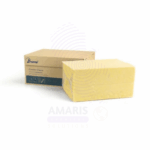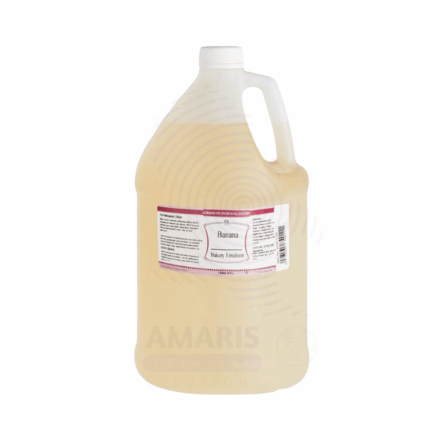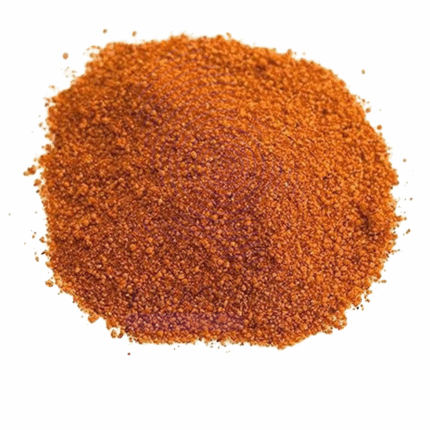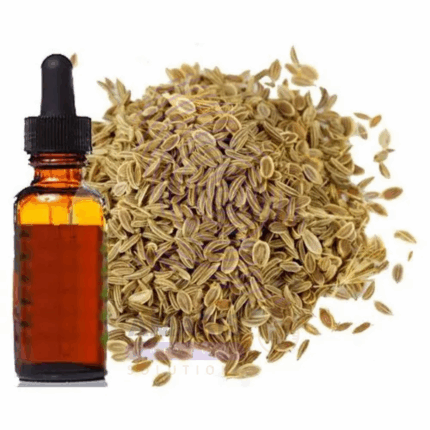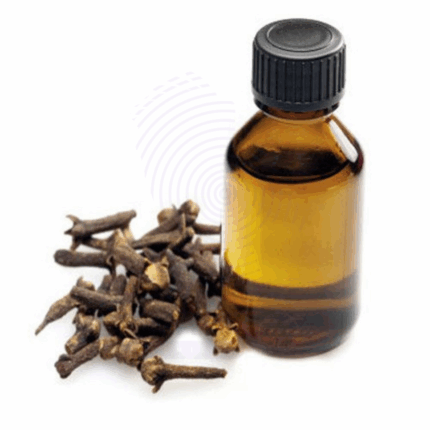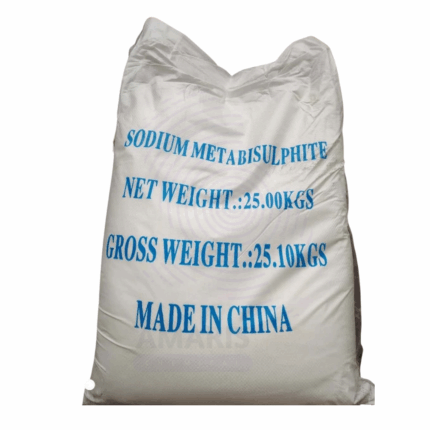Blueberry Toppings
Whatsapp Order
Blueberry Toppings are sweet, fruit-based condiment preparations made primarily from blueberries, sugar, and thickening agents. They are characterized by a vibrant blue-purple color, fruity aroma, and a sweet-tart flavor profile. Typically semi-viscous with chunks or pureed pieces of blueberry, these toppings are used as finishing ingredients in desserts, breakfast foods, and beverages. Blueberry toppings may be prepared as preserves, syrups, or glazes and often contain natural flavors and preservatives to enhance shelf life and sensory appeal.
Description
Table of Contents
Toggle
Primary Uses
- Food Service and Culinary
- Used as a dessert topping for cakes, cheesecakes, ice cream, pancakes, waffles, and yogurt.
- Added to breakfast cereals and oatmeal to provide natural fruity sweetness and texture.
- Incorporated as a filling or glaze in bakery products such as muffins, donuts, and pastries.
- Beverage Industry
- Mixed into smoothies, milkshakes, and specialty coffee drinks for added flavor and color.
- Used as a flavor enhancer or decorative swirl in cocktails and mocktails.
- Retail Food Products
- Packaged for direct consumer use as jarred fruit toppings or squeeze bottles for home culinary use.
Secondary Uses
- Food Manufacturing
- Used as an ingredient in fruit-flavored yogurts, ice cream mixes, and frozen desserts.
- Incorporated in cereal bars and snack foods for natural fruit flavor and sweetness.
- Catering & Events
- Utilized for food decoration and presentation at large-scale catering events, buffets, and dessert bars.
- Nutritional & Health Products
- Sometimes fortified with antioxidants and vitamins for functional food products emphasizing health benefits.
PRODUCT KEY FEATURES
Basic Identification Attributes
- Chemical Name (IUPAC): Not applicable (complex food mixture)
- Common/Trade Name: Blueberry Toppings
- CAS Number: Not applicable
- HS Code: 2009.79.90 (Fruit preparations, other than those with added sugar)
- Synonyms:
- Blueberry dessert topping
- Blueberry fruit topping
- Blueberry pie topping
- Blueberry sauce
2. Physical & Chemical Properties
- Physical State: Semi-viscous liquid or gel with fruit pieces
- Color & Odor: Blue to purple; fresh blueberry aroma
- Melting Point: Not applicable
- Boiling Point: Not applicable
- Density: Approximately 1.1–1.3 g/cm³ (varies with formulation)
- Solubility: Miscible with water; dispersible in other aqueous food matrices
- pH: Typically 3.0–4.0 (acidic due to natural fruit acids)
- Vapor Pressure: Negligible
- Stability: Stable under refrigerated or room temperature conditions; susceptible to microbial spoilage if untreated
3. Safety & Hazard Attributes
- Hazard Class (GHS): Not hazardous (food product)
- NFPA Ratings:
- Health: 0
- Flammability: 0
- Reactivity: 0
- Exposure Limits: None applicable
- Toxicity: Non-toxic; edible food-grade product
- Reactivity: Stable; minimal chemical reactivity under normal storage
4. Storage & Handling Attributes
- Storage Conditions: Store in a cool, dry place away from direct sunlight; refrigeration recommended after opening
- Container Type: Glass jars, plastic tubs, or squeeze bottles with airtight seals
- Shelf Life: Typically 12–18 months unopened; 2–4 weeks refrigerated after opening
- Special Handling: Avoid contamination; use clean utensils; keep sealed when not in use
5. Regulatory & Compliance Attributes
- FDA Status: Generally Recognized As Safe (GRAS) for intended use as food topping
- Food Standards: Compliant with Codex Alimentarius standards for fruit preserves and toppings
- Labeling: Must list ingredients, allergens, and nutritional information as per local regulations
- Transportation: Not regulated as hazardous
- Waste Disposal: Food waste disposal regulations; biodegradable packaging preferred
6. Environmental & Health Impact
- Ecotoxicity: Minimal; biodegradable organic product
- Persistence: Naturally biodegradable
- Bioaccumulation: Not applicable
- Carcinogenicity/Mutagenicity: None known
Biodegradability: Biodegradable; composed of natural fruit and food-grade additives
SAFETY HANDLING PRECAUTIONS
4. Safety Handling Precautions
Personal Protective Equipment (PPE):
- Generally not required for handling finished product
- Use gloves if sensitive to food acids or allergens
Handling Measures:
- Use clean, sanitized utensils to avoid contamination
- Avoid prolonged exposure to heat or direct sunlight
Storage Measures:
- Keep containers sealed and refrigerated after opening to maintain quality and prevent spoilage
Hygiene Practices:
- Wash hands before and after handling product
- Maintain sanitary conditions to avoid microbial contamination
First Aid Measures
- Inhalation: Not applicable (food product)
- Skin Contact: Wash with water if irritation occurs due to acidity or allergens
- Eye Contact: Rinse with water if splashed; seek medical advice if irritation persists
- Ingestion: Safe for consumption; if allergic reaction occurs, seek medical help
Firefighting Measures
- Fire Hazards: Non-flammable, water-based food product
- Extinguishing Media: Not applicable
- Special Precautions: None required
- Decomposition Products: None hazardous under normal conditions
Related products
Banana Liquid Flavour
Banana Liquid Flavour is a high-quality food-grade flavoring agent designed to replicate the sweet, creamy, and fruity aroma of ripe bananas. It is widely used in the food and beverage industry due to its excellent flavor stability, solubility in aqueous systems, and compatibility with various processing conditions. This flavoring is ideal for enhancing taste profiles in a wide range of culinary applications and is formulated to maintain its potency during baking, freezing, or high-temperature cooking processes. Its versatility makes it suitable for both commercial food production and artisanal applications.
Barbeque Seasoning Powder Flavour Food Grade
Barbeque Seasoning Powder Flavour Food Grade is a premium food-grade powdered flavoring designed to impart the rich, smoky, and savory taste characteristic of classic barbeque dishes. This versatile seasoning powder combines a balanced blend of spices and smoky notes to enhance the flavor profile of a wide range of foods. It is ideal for use in marinades, dry rubs, snack seasonings, sauces, and ready-to-eat products. The powder form ensures ease of handling, uniform distribution, and excellent stability during cooking and storage.
Celery Seed Oil
Celery Seed Oil is a concentrated essential oil obtained by steam distillation from the dried seeds of the Apium graveolens plant. It features a warm, spicy, earthy aroma with slightly bitter undertones and is rich in compounds like limonene, sedanolide, and selinene. Traditionally used in natural medicine for its anti-inflammatory, digestive, and diuretic properties, Celery Seed Oil is also increasingly recognized in cosmetic, aromatherapy, and flavoring applications. It is distinct from celery leaf oil, carrying a denser, more resinous aromatic profile and a stronger pharmacological potency.
Clove Bud Oil
Clove Bud Oil is a potent essential oil obtained through steam distillation of the flower buds of the Syzygium aromaticum (formerly Eugenia caryophyllata) tree. Renowned for its strong, spicy, and warm aroma, it is rich in eugenol — a powerful natural compound with significant antiseptic, analgesic, and antimicrobial properties.
Used historically in dental care, traditional medicine, and perfumery, Clove Bud Oil is now widely applied in cosmetics, oral care, food flavoring, wellness, and natural cleaning products. It is also valued in aromatherapy for its grounding and energizing effects.
Ethylvanillin
Ethylvanillin (3-Ethoxy-4-hydroxybenzaldehyde) is a synthetic aromatic aldehyde widely used as a flavoring agent and fragrance ingredient. It is a white to pale yellow crystalline powder with a strong, sweet vanilla-like odor, but more intense than natural vanillin. Ethylvanillin offers excellent flavor stability, solubility in alcohol and oils, and is valued for its enhanced vanilla aroma in food, beverage, cosmetics, and pharmaceutical formulations. Due to its potent scent and flavor profile, it is a preferred substitute or complement to natural vanilla extract.
Potassium Metabisulphite Food Grade
Potassium Metabisulphite (Food Grade) is a white crystalline powder with strong antioxidant and preservative properties. It is widely used in the food and beverage industry as a disinfectant, antioxidant, and preservative to prevent spoilage and microbial growth. It also acts as a bleaching agent and sulfur dioxide (SO₂) source. This compound is critical in winemaking, brewing, and food processing to maintain product quality and extend shelf life.
Sodium Formate Food Grade
Sodium Formate Food Grade is the sodium salt of formic acid, typically available as a white crystalline powder or granules. It is widely used in various industrial applications due to its properties as a buffering agent, de-icing agent, and reducing agent. Sodium Formate is valued for its effectiveness in textile dyeing, leather tanning, and as a corrosion inhibitor in oil and gas drilling fluids.
Sodium Metabisulphite
Sodium Metabisulphite is a white crystalline powder widely used as an antioxidant, disinfectant, and preservative. It dissolves readily in water, releasing sulfur dioxide, which acts as a powerful antimicrobial and antioxidant agent. This chemical finds broad applications in food processing, water treatment, pharmaceuticals, and industrial manufacturing to prevent spoilage, control microbial growth, and protect equipment from corrosion.


 Preservatives(food)
Preservatives(food) Flavor Enhancers
Flavor Enhancers Acidulants
Acidulants Sweeteners
Sweeteners Antioxidants
Antioxidants Colorants(food)
Colorants(food) Nutraceutical Ingredients (food)
Nutraceutical Ingredients (food) Nutrient Supplements
Nutrient Supplements Emulsifiers
Emulsifiers
 Collectors
Collectors Dust Suppressants
Dust Suppressants Explosives and Blasting Agents
Explosives and Blasting Agents Flocculants and Coagulants
Flocculants and Coagulants Frothers
Frothers Leaching Agents
Leaching Agents pH Modifiers
pH Modifiers Precious Metal Extraction Agents
Precious Metal Extraction Agents
 Antioxidants(plastic)
Antioxidants(plastic) Colorants (Pigments, Dyes)
Colorants (Pigments, Dyes) Fillers and Reinforcements
Fillers and Reinforcements Flame Retardants
Flame Retardants Monomers
Monomers Plasticizers
Plasticizers Polymerization Initiators
Polymerization Initiators Stabilizers (UV, Heat)
Stabilizers (UV, Heat)
 Antifoaming Agents
Antifoaming Agents Chelating Agents
Chelating Agents Coagulants and Flocculants
Coagulants and Flocculants Corrosion Inhibitors
Corrosion Inhibitors Disinfectants and Biocides
Disinfectants and Biocides Oxidizing Agents
Oxidizing Agents pH Adjusters
pH Adjusters Scale Inhibitors( water)
Scale Inhibitors( water)
 Antioxidants(cosmetic)
Antioxidants(cosmetic) Emollients
Emollients Fragrances and Essential Oils
Fragrances and Essential Oils Humectants
Humectants Preservatives
Preservatives Surfactants(cosmetic)
Surfactants(cosmetic) Thickeners
Thickeners UV Filters
UV Filters
 Fertilizers
Fertilizers Soil Conditioners
Soil Conditioners Plant Growth Regulators
Plant Growth Regulators Animal Feed Additives
Animal Feed Additives Biostimulants
Biostimulants Pesticides (Herbicides, Insecticides, Fungicides)
Pesticides (Herbicides, Insecticides, Fungicides)
 Active Pharmaceutical Ingredients (APIs)
Active Pharmaceutical Ingredients (APIs) Excipients
Excipients Solvents(pharmaceutical)
Solvents(pharmaceutical) Antibiotics
Antibiotics Antiseptics and Disinfectants
Antiseptics and Disinfectants Vaccine Adjuvants
Vaccine Adjuvants Nutraceutical Ingredients (pharmaceutical)
Nutraceutical Ingredients (pharmaceutical) Analgesics & Antipyretics
Analgesics & Antipyretics
 Analytical Reagents
Analytical Reagents Solvents(lab)
Solvents(lab) Chromatography Chemicals
Chromatography Chemicals Spectroscopy Reagents
Spectroscopy Reagents microbiology-and-cell-culture-reagents
microbiology-and-cell-culture-reagents Molecular Biology Reagents
Molecular Biology Reagents Biochemical Reagents
Biochemical Reagents Inorganic and Organic Standards
Inorganic and Organic Standards Laboratory Safety Chemicals
Laboratory Safety Chemicals Specialty Laboratory Chemicals(Special Laboratory Equipment)
Specialty Laboratory Chemicals(Special Laboratory Equipment)
 Demulsifiers
Demulsifiers Hydraulic Fracturing Fluids
Hydraulic Fracturing Fluids Scale Inhibitors(oil)
Scale Inhibitors(oil) Surfactants(oil)
Surfactants(oil) Drilling Fluids
Drilling Fluids
 Dyes and Pigments
Dyes and Pigments Bleaching Agents
Bleaching Agents Softening Agents
Softening Agents Finishing Agents
Finishing Agents Antistatic Agents
Antistatic Agents
 Admixtures
Admixtures Waterproofing Agents
Waterproofing Agents Sealants and Adhesives
Sealants and Adhesives Curing Compounds
Curing Compounds Concrete Repair Chemicals
Concrete Repair Chemicals Anti-Corrosion Coatings
Anti-Corrosion Coatings
 Surfactants(cleaning)
Surfactants(cleaning) Builders
Builders Enzymes
Enzymes Solvents (Cleaning)
Solvents (Cleaning) Fragrances
Fragrances
 Electronic Chemicals
Electronic Chemicals Catalysts
Catalysts Lubricants
Lubricants Photographic Chemicals
Photographic Chemicals Refrigerants
Refrigerants Automotive chemicals
Automotive chemicals Pyrotechnic Chemicals
Pyrotechnic Chemicals
 Biodegradable Surfactants
Biodegradable Surfactants Bio-based Solvents
Bio-based Solvents Renewable Polymers
Renewable Polymers Carbon Capture Chemicals
Carbon Capture Chemicals Wastewater Treatment Chemicals
Wastewater Treatment Chemicals
 Pigments
Pigments Solvents(paint)
Solvents(paint) Specialty Coatings
Specialty Coatings Binders/Resins
Binders/Resins Additives
Additives Driers
Driers Anti-Corrosion Agents
Anti-Corrosion Agents Functional Coatings
Functional Coatings Application-Specific Coatings
Application-Specific Coatings
 Fresh Herbs
Fresh Herbs Ground Spices
Ground Spices Whole Spices
Whole Spices Spice Blends
Spice Blends Dried Herbs
Dried Herbs
 Leavening Agents
Leavening Agents Dough Conditioners
Dough Conditioners Flour Treatments
Flour Treatments Fat Replacers
Fat Replacers Decoratives
Decoratives Preservatives(baking)
Preservatives(baking)
 Plasticizers & Softeners
Plasticizers & Softeners Reinforcing Agents
Reinforcing Agents Adhesion Promoters
Adhesion Promoters Vulcanizing Agents
Vulcanizing Agents Antidegradants
Antidegradants Blowing Agents
Blowing Agents Fillers & Extenders
Fillers & Extenders Accelerators & Retarders
Accelerators & Retarders
